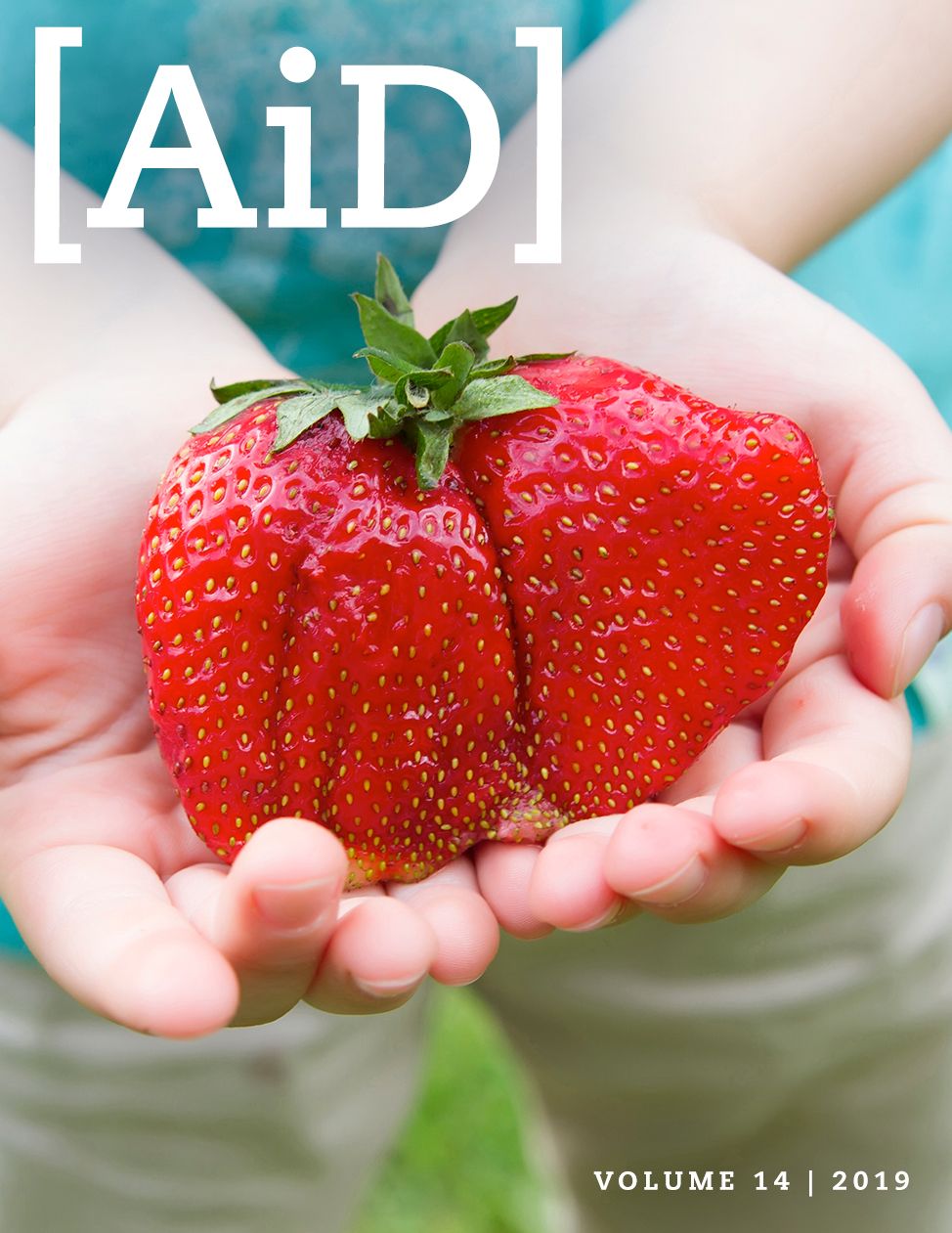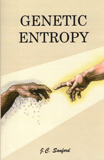
Animal Polyploidy: A Mechanism for Evolution?
Abstract
Polyploidy, though less common in animals than it is in plants, does appear to have played a role in the speciation in animals. Since evolutionists need an increase in information in the genome in order to go from molecules to man, polyploidy is postulated to be a mechanism to increase genetic information available to a population. This paper will discuss polyploidy in animals.
Introduction
Note: This article is part of a series. For a definition of many of the technical terms in this article, see the article on plant polyploidy.
Animal polyploidy does exist, though it appears to be far less common than it is in plants. As in plants, polyploidy arises as a reproductive mistake. During sexual reproduction, two diploid parents exchange genetic information. If one of their gametes produces diploid instead of the usual haploid, there is a chance that gamete will lead to a polyploid offspring. If the diploid gamete combines with the other parent’s normal haploid gamete, a triploid offspring will result. This offspring will likely be reproductively isolated. This process occurs infrequently, but it does happen.
Animal Polyploidy
It has been argued for decades that polyploidy is relatively uncommon in animals, though this has been challenged in recent years.1 The reasons for this have been hotly debated. One scientist proposed that polyploidy is harder to maintain in animals because the extra Y chromosome in males tended to break down easily.2 Others have pointed out that, even if a polyploid animal were to arise, it would almost certainly be reproductively isolated or unable to breed with its parent species due to the extra chromosomes in the genome and the low probability of a polyploid individual of the opposite gender arising in the same population. Others have postulated that because animals reproduce sexually, polyploidy is not favored. This would be due to the belief that the sex chromosomes are unstable when ploidized and break down easily. However, a final answer to why the rarity exists is still elusive.3
One mechanism for polyploidy is hybridization. Using a loach (a type of fish) species, researchers were able to induce polyploidy in the lab by simple hybridization of two incompatible species,4 i.e., the resultant polyploid offspring were unable to reproduce sexually. The females laid diploid eggs that were clones of themselves, and the males were infertile. The resultant cloned female offspring were bred with adults from both species. When sperm cells actually fertilized the eggs, the results were triploid individuals. While the researchers did not attempt it, it would be interesting to know if the male and female triploid fry could breed and produce stable offspring. This test is important because it affects whether a new species can be produced or not under the biological species concept, which requires at least partial reproductive isolation. The biological species concept, one of thirty-two options presented by the evolutionary community, argues that a species is defined based on reproductive isolation from other, similar species.
A second study involving polyploid fishes determined that the polyploid barbs of southern Africa likely arose from a diploid ancestor. In some cases, the current species are hexaploid (6 copies), so there may have been numerous polyploid events to reach that point. The researchers believe there are other polyploids yet to be discovered among the barbs.5
Another study demonstrated that new species of freshwater snails had arisen due to polyploidy.6 Polyploid species have also been observed in other fish, such as lungfish, perch, and salmon.7 Parthenogenic, or self-reproducing, fish are the most frequently observed polyploid creatures, but other examples of polyploid animals include insects, mollusks, amphibians, reptiles, and mammals.8
In short, there is no consensus on the benefits, neutrality, or negatives of polyploidy in the animal kingdom in the secular literature.
With all these polyploid animals that exist in the world, it is reasonable to consider whether polyploidy is a blessing or a curse. Does polyploidy confer an advantage to animals, is it neutral, or is it disadvantageous? Most of the literature on this topic points out that animal polyploids, particularly vertebrates, typically die in the womb.9 However, this consensus is beginning to fade. Polyploid animals are beginning to be recognized, even in mammals10,11 though the mammalian data has been challenged.12 It would seem that polyploidy cannot be as deleterious in animals as was once believed. This does not mean that polyploidy is not deleterious; rather, polyploidy might be considered a nuisance rather than a fatality, even if it is deleterious under certain conditions. There is some evidence in fishes that it can be beneficial in some cases.13 In short, there is no consensus on the benefits, neutrality, or negatives of polyploidy in the animal kingdom in the secular literature.
Polyploid Speciation
Despite being relatively uncommon, polyploid speciation does occur in the animal kingdom. One such example comes from gray tree frogs of genus Dryophytes. Dryophytes chrysoscelis, formerly Hyla chrysocelis, is a species that is diploid and is believed to have been one of the progenitors of Dryophytes versicolor, formerly Hyla versicolor. D. versicolor is believed to have speciated by allopolyploidy.14 It is a tetraploid species, leading to the possibility that multiple rounds of polyploidy occurred during the speciation process.
Another potential allopolyploid group is the clawed frogs of genera Xenopus and Silurana . A study done on these creatures suggested that the two genera underwent polyploidy at least four times in Xenopus and twice in Silurana . However, there are significant problems with this analysis, including a lack of any observational data from Silurana . Instead, the researchers “inferred the ploidy level of these individuals solely by cloning and counting the number of divergent RAG-1 alleles.”15 In other words, the researchers cloned several genes within the genome of these frogs and counted the differences. Based on the number of differences, they inferred polyploidy. They then used that inference to claim they were polyploid. That level of intellectual dishonesty or sloppiness comes as no surprise, but also provides no information that is at all useable in a scientific sense. Xenopus seems more strongly supported as a potential polyploid genus, though since the data was based on a few genes, not the entire genome, this hypothesis cannot be confirmed.
Allopolyploidy is also postulated to occur in sturgeons of genus Acipenser. There are several tetraploid species, as well as at least one hexaploid species. These species are believed to have arisen by means of allopolyploidy, though heavy evolutionary presuppositions influenced this position. The scientists assumed that evolution was involved in producing the sturgeon ancestors. However, both the tetraploid and hexaploid species seem to be supported by molecular data, regardless of how they arose.16 In this instance, the differing numbers of chromosomes in these related sturgeon species seems to fit the idea of multiple whole genome duplications.
Since polyploid speciation is nearly instantaneous by definition, polyploidy is actually more consistent with a Genesis account of post-flood speciation,
Conclusions
Animal polyploidy seems significantly less well-documented and common than plant polyploidy; however, its existence is not evidence for evolution. In fact, since polyploid speciation is nearly instantaneous by definition, polyploidy is actually more consistent with a Genesis account of post-flood speciation, though primarily in plants. Polyploidy would have created new species rapidly, even in the evolutionary paradigm. Though possibly providing more potential for variation within a kind, it does not provide novel specified genetic information. To use a book analogy, extra copies of old chapters (polyploidy) do not create new chapters (new specified genetic information). Regardless of whether it is ultimately classified as deleterious, neutral, beneficial, or all the above depending on the species, polyploid speciation is consistent with the creationist worldview.
Answers in Depth
2019 Volume 14
Answers in Depth explores the biblical worldview in addressing modern scientific research, history, current events, popular media, theology, and much more.
Browse VolumeFootnotes
- B. K. Mable, “‘Why Polyploidy Is Rarer in Animals Than in Plants’ Myths and Mechanisms,” Biological Journal of the Linnean Society vol. 82, 4 (2004): 453–466, https://academic.oup.com/biolinnean/article/82/4/453/2643078.
- H. Allen Orr, “‘Why Polyploidy Is Rarer in Animals Than in Plants’ Revisited,” The American Naturalist vol. 136, 6 (1990): 759–770, http://www.pendlynxhare.com/449/Orr%20Polyploidy.pdf.
- B. Wertheim et al., “Polyploidy in Animals: Effects of Gene Expression on Sex Determination, Evolution and Ecology,” Cytogenetic and Genome Research vol. 140, 2–4 (2013), https://www.karger.com/Article/FullText/351998.
- Lukas Choleva et al., “Synthesis of Clonality and Polyploidy in Vertebrate Animals by Hybridization Between Two Sexual Species,” Evolution vol. 66–67 (2012): 2191–2203, OnlineLibrary PDF.
- C.S. Tsigenopoulos et al., “Multiple Origins of Polyploidy in the Phylogeny of Southern African Barbs (Cyprindae) as Inferred from mtDNA Markers,” Heredity vol. 88 (2002): 466–473, https://www.nature.com/articles/6800080.
- Michael A. Goldman and Philip T. LoVerde, “Hybrid Origin of Polyploidy in Freshwater Snails of the Genus Bulinus (Mollusca: Planorbidae),” Evolution vol. 37, 3 (1983): 592–600, OnlineLibrary PDF.
- Steven C. Le Comber and Carl Smith, “Polyploidy in Fishes: Patterns and Processes,” Biological Journal of the Linnean Society vol. 82, 4 (2004): 431–442, https://academic.oup.com/biolinnean/article/82/4/431/2643071.
- Barbara K. Mable, “Breaking Down Taxonomic Barriers in Polyploidy Research,” Trends in Plant Science vol. 8, 12 (2003): 582–590, Science Net PDF.
- Sarah P. Otto, “The Evolutionary Consequences of Polyploidy,” Cell vol. 131, 2 (2007): 452–462, Science Direct Article.
- Mable, 2003.
- Teresa Davoli and Titia de Lange, “The Causes and Consequences of Polyploidy in Normal Development and Cancer,” Annual Review of Cell and Developmental Biology vol. 27 (2011): 585–610, delangelab.rockefeller.edu/pubs/128_Davoli_AnnRevCellDevBiol_2010.pdf.
- Ben J. Evans et al., “Evolution of the Largest Mammalian Genome,” Genome Biology and Evolution vol. 9, 6 (2017): 1711–1724, https://academic.oup.com/gbe/article/9/6/1711/3954029.
- Le Comber and Smith, 2004.
- Alisha K. Holloway et al., “Polyploids with Different Origins and Ancestors Form a Single Sexual Polyploid Species,” The American Naturalist vol. 167, 4 (2006): 88–101, https://www.journals.uchicago.edu/doi/pdfplus/10.1086/501079.
- Ben J. Evans et al., “A Mitochondrial DNA Phylogeny of African Clawed Frogs: Phylogeography and Implications for Polyploid Evolution,” Molecular Phylogenetics and Evolution 33 (2004): 197–213, amphibiatree.org/files/EvansETAL2004.pdf.
- Victor P. Vasil’ev, “Mechanisms of Polyploid Evolution in Fish: Polyploidy in Sturgeons,” in Biology, Conservation and Sustainable Development of Sturgeons by R. Camona et al. (Germany: Springer, 2009), https://link.springer.com/chapter/10.1007/978-1-4020-8437-9_6#citeas.
Recommended Resources

Answers in Genesis is an apologetics ministry, dedicated to helping Christians defend their faith and proclaim the good news of Jesus Christ.
- Customer Service 800.778.3390
- © 2024 Answers in Genesis




